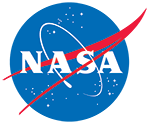
ATLAS/ICESat-2 L3A Sea Ice Freeboard Quick Look, Version 7
Data set id:
ATL10QL
DOI: 10.5067/ATLAS/ATL10QL.007
This is the most recent version of these data.
Version Summary
Version Summary
-Introduced interpolation of reference surface heights when computing freeboard heights. In previous releases, a static value of the 10 km reference surface was used to compute freeboard heights. In v7, reference surface heights are interpolated (if neighboring reference surfaces are available) to the freeboard height location before freeboard height computation.
-Introduced option to include heights computed using a lognormal distribution when available.
-Fixed oc_depth parameter. Previously, oc_depth only had values of 0.0.
-Introduced option to include heights computed using a lognormal distribution when available.
-Fixed oc_depth parameter. Previously, oc_depth only had values of 0.0.
Overview
ATL10QL is the quick look version of ATL10 and is based on the same algorithms that generate the ATL10 final data products. Once final ATL10 files are available, the corresponding ATL10QL files are removed. ATL10 contains along-track sea ice freeboard calculated for 10 km swath segments. The data were acquired by the Advanced Topographic Laser Altimeter System (ATLAS) instrument on board the ICESat-2 observatory.
Parameter(s):
FREEBOARD
Platform(s):
ICESat-2
Sensor(s):
ATLAS
Data Format(s):
HDF5
Temporal Coverage:
- 8 June 2025 to present
Temporal Resolution:
- 91 day
Spatial Resolution:
- Not Specified
Spatial Reference System(s):
- WGS 84EPSG:4326
Spatial Coverage:
- N:88S:-88E:180W:-180
Blue outlined yellow areas on the map below indicate the spatial coverage for this data set.
Data Access & Tools
A free NASA Earthdata Login account is required to access these data. Learn More
Documentation
User Guide
ATBDs
General Resources
Product Specification Documents
Help Articles
General Questions & FAQs
This article covers frequently asked questions about the NASA NSIDC DAAC's Earthdata cloud migration project and what it means to data users.
Read this help article to learn about what ICESat-2 quick look data products are and how to find them.
How to Articles
The NASA Earthdata Cloud is the NASA cloud-based archive of Earth observations. It is hosted by Amazon Web Services (AWS). Learn how to find and access NSIDC DAAC data directly in the cloud.